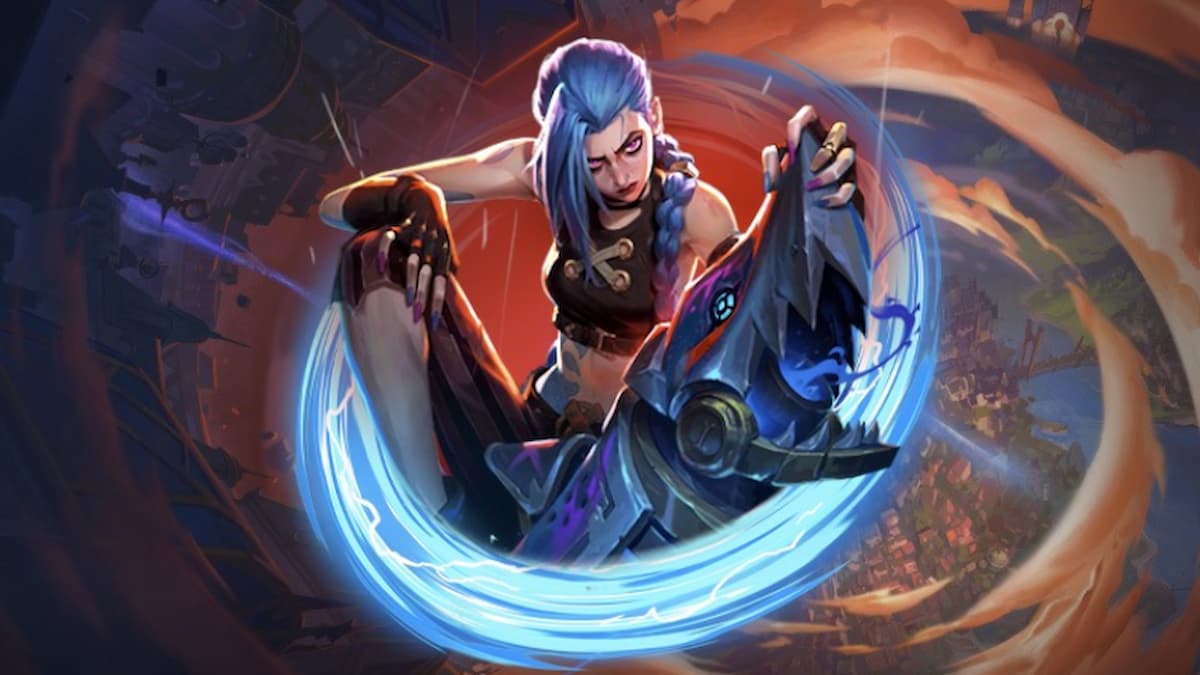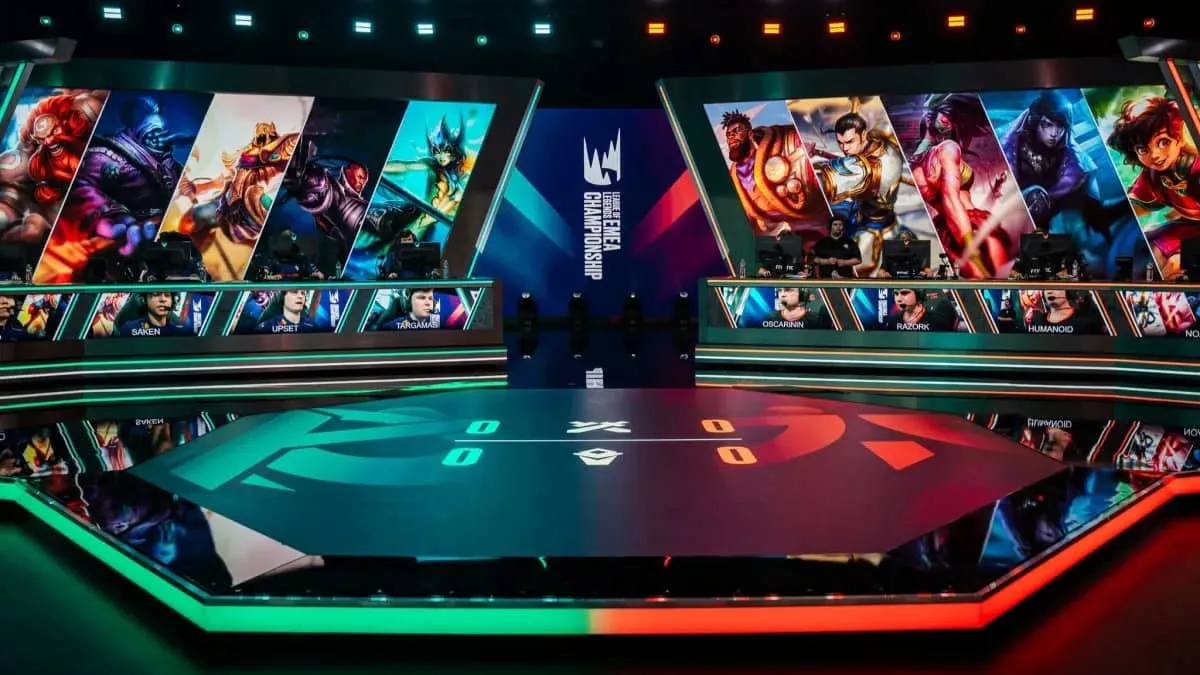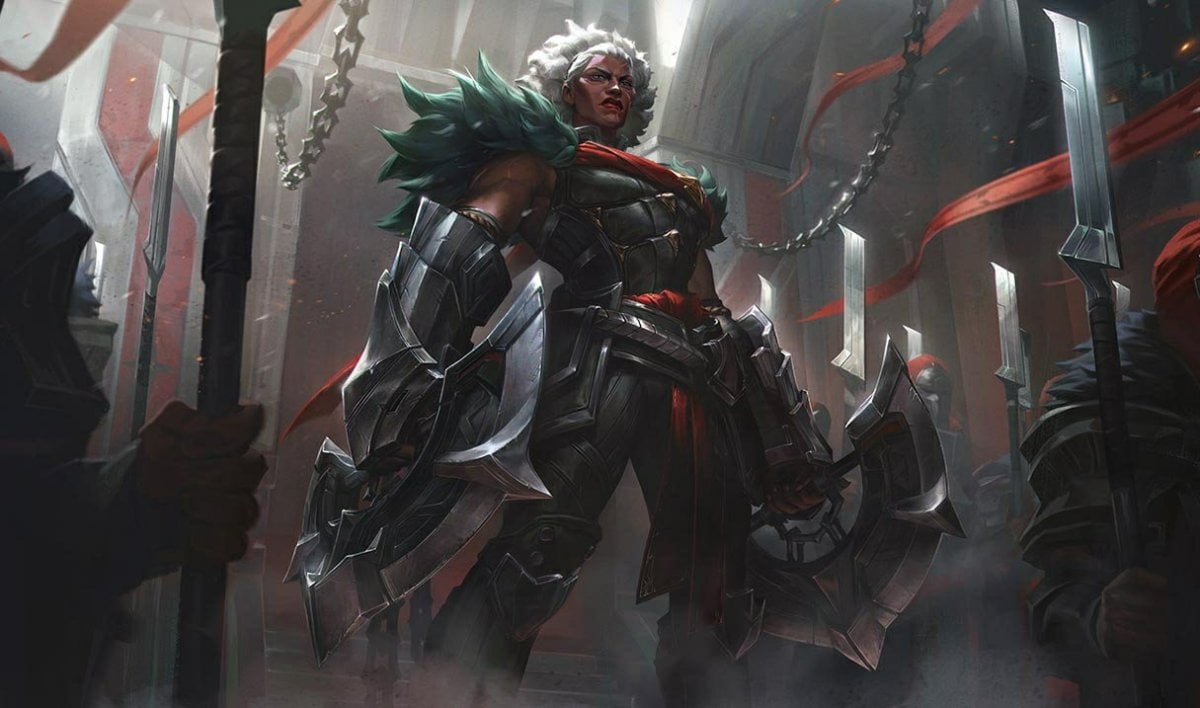The Challenger Series is often labelled League of Legends’ “amateur” scene, but these days, there’s nothing amateur about it.
Challenger teams have houses, coaching staffs, and contracts paying out tens of thousands of dollars. Many Challenger teams are just as professional as their League Championship Series (LCS) counterparts. But many of the rules governing the Challenger Series and its competitors are still amateurish and inconsistent with those that rule the higher leagues.
For example, Riot Games regulates free agency among LCS teams and players. It’s against the rules for an LCS team to contact an LCS player while they’re under contract without the permission of the player’s team. But Challenger teams don’t have the same protection, even though they’re signing players to contracts of similar value.
Riot is well aware of this problem, and it’s evaluating how to solve it.
Riot Games’ league operations, manager Nick Allen, admitted there are problems. It’s “fair to say,” Allen told me at the Midseason Invitational earlier this month, that the Challenger scene’s growth exceeded Riot’s expectations. The rules governing the Challenger Series have lagged behind the needs of the players and teams competing in it, and that’s set to change. At least, after this season.
“The Challenger framework is highly prioritized right now,” he said.
That’s in part because it’s not accomplishing what it was laid out to do.
A foundation for future pros
When Riot revealed the Challenger Series in December 2013, the goal was to build an amateur scene to feed talent into the professional league. In a structure similar to the English Premiere League and other top soccer leagues around the world, the bottom-ranked LCS teams can fall out of the league in favor of the top performing teams in a league below the LCS.
“One of our largest goals is to get the best possible teams into the LCS. [The Challenger Series] is a tool to help accomplish that,” Allen said. “It’s also to create a platform for storylines and brands to continue on in the event that they are knocked out of the LCS. For teams like Coast and MYM that have been relegated, their story continues and they have a place where they continue to compete and continue their team endeavors.”
Allen is “cautiously optimistic” about the influx of cash.
But the story of teams like Coast and MYM often abruptly ends with their relegation. The current Challenger series ruleset requires three players of the five-man starting lineup from the series to be members of the previous LCS team in order for that team to stay in the Challenger Series. After relegation, however, players have little incentive to stick with the organization—even if it was their own poor play that helped put the team in that position.
Winterfox, relegated after the Summer Split, can’t stop Eugene “Pobelter” Park from leaving to join Counter Logic Gaming or refusing to continue on the team. The future of Winterfox’s spot in the Challenger Series is at the whim of the players, sometimes leaving the organizations helpless or forced to keep underperforming or problem players just to maintain their berth in Challenger. And the same goes for other relegated LCS teams. That’s hardly a “platform for storylines and brands to continue on,” as Allen and Riot Games hoped it would be.
Riot is well aware of this problem, and it’s evaluating how to solve it. It’s not necessarily a bad thing that players like Pobelter leave for greener pastures; their story needs to continue on, as well. But the instability isn’t something Riot wants to see.
“We didn’t want to see drastic shakeups to rosters,” Allen said. “We wanted for the most part teams to be recognizable from the previous roster, when they get knocked to Challenger.”
That sentiment sounds a little far-fetched considering the harsh reality of relegation. Teams in the English Premiere League rarely escape relegation without massive roster shakeups, in large part due to the economics involved. Good players don’t want to compete in a second tier league, and the relegated team likely can’t afford to pay them a competitive rate without the benefits of the EPL’s hefty television contracts. The LCS is similar: Riot Games subsidizes LCS franchises by giving money to pay player salaries. It’s certainly difficult for an organization to keep operating at the same level without that benefit.
But, Nick Allen said, “as we’re seeing right now, brands and organizations have evolved in the space and so our rules also need to evolve to accommodate and adjust for that advancement.” Allen didn’t elaborate on the specifics of that evolution even as he made it clear that it’s a priority for Riot heading into 2015.
Big money, big organizations
When Riot thought up the Challenger Series, there weren’t many organizations investing in League teams beyond the ones that ended up in the LCS. But that’s changed much quicker than anticipated.
“My observation in the scene is this: Players. Get. Fucked.” — Chris Badawi
Last season, three Challenger Series teams lived in team houses and were supported by professional coaching staffs. The ones that did not were part of some of League’s largest brands, Counter Logic Gaming and Team SoloMid. This season, with recently relegated Team Coast and Winterfox entering the mix, even more teams should feature LCS-like support.
The Challenger Series is rolling in big money. Billionaire Martin Shkreli just bought into the scene—after Enemy Esports turned down his $1.2 million offer for its LCS team. Chris Badawi, the owner of Misfits, who hasn’t yet qualified for the Challenger Series, pays veterans like Alberto “Crumbzz” Rengifo and Alex Ichetovkin enough for them to turn down offers from LCS teams.
Allen is “cautiously optimistic” about the influx of cash. More resources means stronger organizations and potentially even more solid teams entering the LCS. Even if these new teams can’t reach the LCS, it puts pressure on LCS teams to perform to stay ahead of the Challenger teams nipping at their heels and potentially providing equal or greater support to their players.
“If they can build these awesome teams and pay for the best players it’s very likely they’ll be promoted into the LCS,” Allen said. “When a team is successful from a resource management perspective the system itself will correct teams out of Challenger. It has kind of a way to balance it out. It’s just going to take some time for that to happen.”
The question, then, is how the system handles a world where more than just 10 teams are really LCS worthy. Just look at the now defunct Team Fusion, an organization with an involved owner who provided a team house, coaching staff, and the dough to import talented players from around the world. But that wasn’t enough in the Expansion Tournament and a season of Challenger competition, leading to the team’s dissolution. When an organization and owner willing to shell out money stops supporting players, that’s not ideal for building a stronger base for the growth of professional League of Legends. The league framework is struggling to support its growth.
“When we created the Challenger series, when we looked at the ecosystem, most of the teams were sort of an ensemble of five to six players that were coming together and didn’t have a lot of organizational experience or structure to their desire to get into the LCS,” Allen said. “The depth of our relationship with them was a bit looser than it is with the LCS, which has more of a formal relationship.”
At the time, teams weren’t even part of organizations, much less backed by coaching staffs and team houses. But times have clearly changed. That relationship needs to evolve, as do Riot’s goals with the Challenger scene. How long will teams like Misfits and Martin Shkreli’s newly christened Odyssey Gaming stick around if they don’t reach the LCS, which is not guaranteed no matter how much money you spend?
“As more and more organizations come in and be successful we have to continue to answer questions,” Allen said. “How do we develop rules and policies to address these new, incoming organizations?”
One of Riot’s solutions was simply expanding the LCS to accommodate the emergence of more professional organizations. That’s one of the reasons why the LCS grew from eight to 10 teams at the start of this year—Riot felt comfortable that the ecosystem had grown to support them. That may soon be the case again, and almost certainly will be at some time in the future. “I would say that we’re not quite ready to expand, but we’ll always keep an eye on it in case that’s the logical next step for the league,” Allen explained. But it’s also a Band-Aid solution to the problems at hand. You can’t expand a professional league indefinitely, after all, no matter what NBA commissioner David Stern wants you to think.
“As we’re talking about as the Challenger series continues to evolve, how that structure and relationship between Riot and the Challenger teams will also need to evolve,” Allen said. “It’s something that we’re thinking through as we’re getting later into this year and as we’re seeing more organizations and resources come into the Challenger Series.”
A complicated relationship
Riot’s loose relationship with the Challenger Series teams is at the crux of the issue, and it may may soon be at an end.
LCS organizations and owners enter into a contractual relationship with Riot Games. They legally agree to work under Riot’s rules and stipulations, allowing the company to implement stricter rules. But in the Challenger scene, teams are essentially just a group of five players—that’s why an organization like Winterfox could lose its Challenger berth if enough of its previous LCS roster jumps ship.
The Challenger Series is rolling in big money.
“Some of the protections that come with that kind of relationship we don’t quite have yet with the Challenger Series,” Allen says. “Which is something we thinking about and we’re considering in the coming months heading into next year.”
It also leads to some sticky situations. Earlier this month, Team Liquid accused Misfits, a team that hasn’t even yet qualified for the Challenger Series, with tampering, illegally contacting Liquid top laner Diego “Quas” Ruiz. But that’s a double standard: as the rules currently stand, Team Liquid has free reign to poach players from Challenger Series teams who don’t have the same protection. In fact, Liquid’s signing of Ruiz in October 2013 could be considered as such; one of Ruiz’s former teammates, Aaron “Bischu” Kim, certainly considered it poaching.
Badawi, the Misfits’s owner, isn’t afraid to challenge the rules. A team outside the LCS that has not signed a contract with Riot Games, Misfits isn’t subject to the league’s poaching rules. Speaking to me at the Midseason Invitational before the Team Liquid allegations were made public, Badawi made it clear he doesn’t believe he, or any other team or player, should be.
“They really skew towards protecting owners and organizations,” he said. “Basically there’s no protection for the players. My observation in the scene is this: Players. Get. Fucked. I can’t put it any simpler than that. And I need that to change. I want that to change at a fundamental level.”
As Badawi sees it, the poaching rules prevent players from figuring out the real value of their skill. They don’t have the opportunity to learn what other teams are willing to pay them, because their current team has no obligation to inform them of any offers. Take players like Søren “Bjergsen” Bjerg and Jason “WildTurtle” Tran, who just extended their contracts with Team SoloMid through 2018. What if they aren’t getting even half of what they’d get if they hit the open market? They’d have no way of ever knowing just how valuable they are under the current system.
In an industry where a career only lasts a few years, that could be a real issue for players who are devoting some of the most important years of their lives to video games, especially when they don’t have proper representation by an agent.
“What Riot is doing by disallowing somebody to approach LCS players to say, ‘Hey, come down the ladder because it’s better here!’ is that they don’t ever have to improve,” Badawi said. “They’re not accountable to their players. They take their players for granted because they know their players will never know their worth, their value, because Riot is protecting the owner from ever having to tell the player what they are worth.”
For their part, Nick Allen and Riot Games are aware of the issues. They’ve actively sought feedback from players and attempted to streamline the free agency process. The company has, for instance, enforced a set contract end date which both creates a period where players can learn their value, if they so desire, and a period of interest in the offseason. Riot is in a tough position as arbiter for the competitive scene, balancing the interests of the teams, the players, and, of course, itself.
In some ways it’s hard to trust the company to properly represent those interests. But so long esports continue to grow as an industry, everyone will benefit—though so.
The poaching rules prevent players from figuring out the real value of their skill.
Riot has received “mixed feedback” on the poaching rules from players, Allen said. “Some people are somewhat satisfied or satisfied with where the rules currently lay,” he said. “Others want more and maybe more akin to what’s happening in traditional sports.”
“Some people want more and we’re going to be listening to feedback and trying to see the best way that we can possibly address the needs, but not at the cost of hurting overall integrity, something like removing poaching protection that could compromise the league.”
Riot is investigating Team Liquid’s tampering charges, but technically Badawi’s team doesn’t fall under Riot’s jurisdiction, which makes punishment seem unlikely. An update to the LCS rulebook, published on May 22, gives Riot the ability to deny owners entry to the LCS if they “act against the spirit of these rules.”
But while Badawi’s team may not be subject to the rules, the flip side is that his team and Challenger squads have no protection from LCS teams plucking the best talents from the lower leagues.
“Riot’s justification for that is that they don’t want to inhibit player upward mobility,” Badawi said. “That’s a reasonable point. But there’s a problem with that. Look: how fucking shitty does your LCS organization have to be for one of your players to want to leave your organization to join a ranked 5’s team?”
“You have people in the LCS at this huge table with all these resources, right? Options and opportunities and access. They are allowed to go to the Challenger Series and pick amongst the bones for the little pieces of meat that remain and grab them with their talons and take them back up to the feast table. And the people in the Challenger Series scattered in the bones can only look up and every time they try to reach at that table for just a scrap of bread Riot’s shield slaps their hand away.”
That paints a morbid picture, and one that Nick Allen doesn’t see. While Riot Games can’t enforce rules on the Challenger side of things because it has no contractual relationship with those teams, that doesn’t mean they’ll ignore legal contracts players sign with those teams.
“Ultimately we don’t feel comfortable having players coming into the LCS that have outstanding contractual obligations to other teams,” he said. “That’s generally a way that Challenger Series teams and organizations protect themselves, by contracting players in the Challenger Series.”
Enforcing those contracts gets a bit more complicated. “The enforcement is still on the LCS side. The framework and paradigm is still on the LCS, versus active enforcement on the Challenger Series side,” Allen said.
If a team like Counter Logic Gaming tries to sign Alex “Alex Ich” Ichetovkin away from Misfits, for example, Riot would not recognize his move to the LCS. “That ultimately becomes a legal dispute between two organizations that we generally would stay out of, but ultimately Alex Ich needs to be legally capable to participate in the LCS before we would allow him to come and do that,” Allen said.
Of course, that type of dispute could turn into a messy affair, the type of thing everyone wants to avoid—and which they might be able to, as soon as Riot figures out just how to handle the Challenger Series. But until then, we’re bound to see more cases like the Team Liquid and Misfits tampering case crop up. As the stakes get higher and higher, players and teams will do what it takes to succeed, whether that means bending Riot’s rules, going under them, or ignoring them altogether.
Photo via Riot Games/Flickr | Remix by Max Fleishman






Published: May 26, 2015 03:49 pm